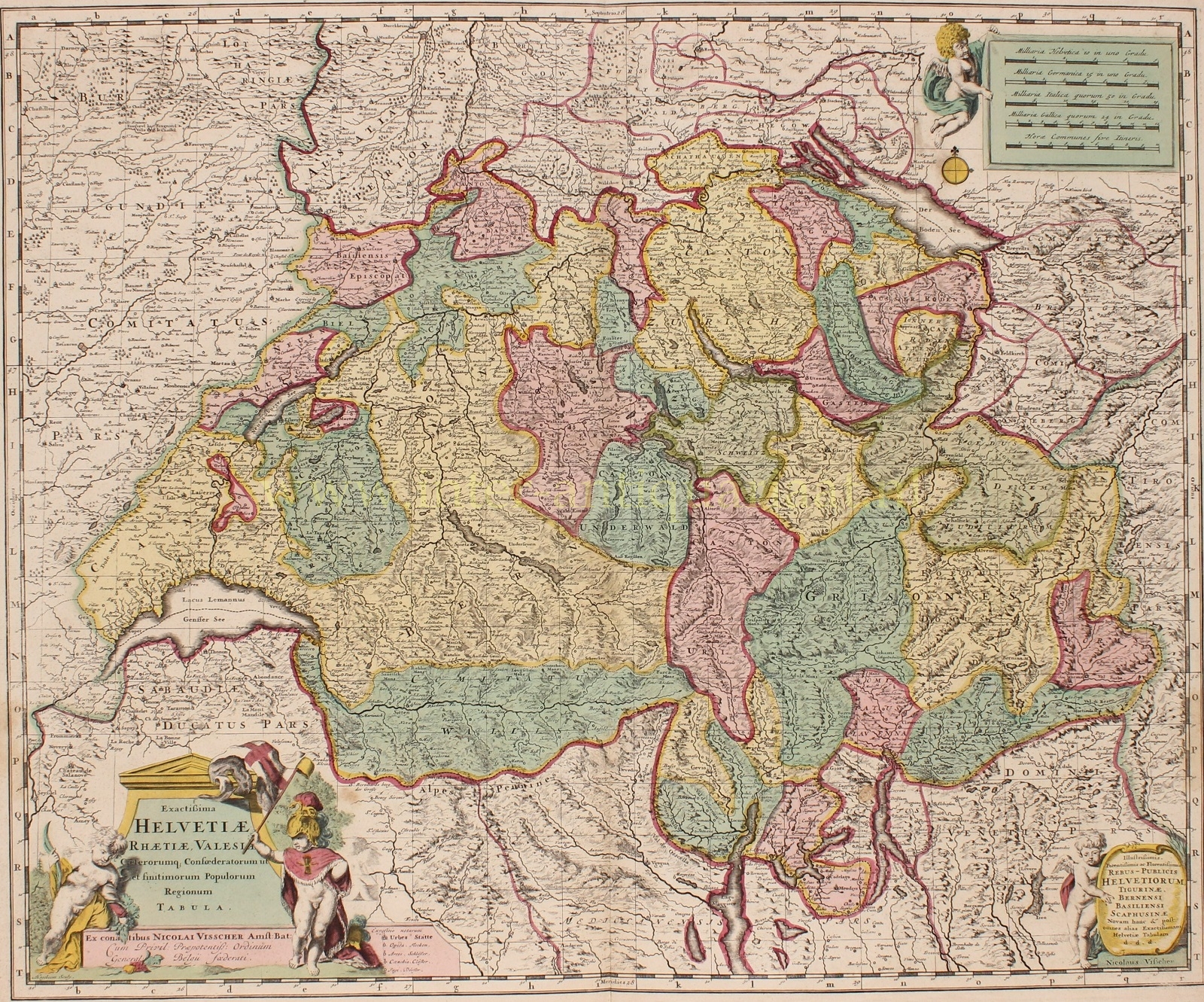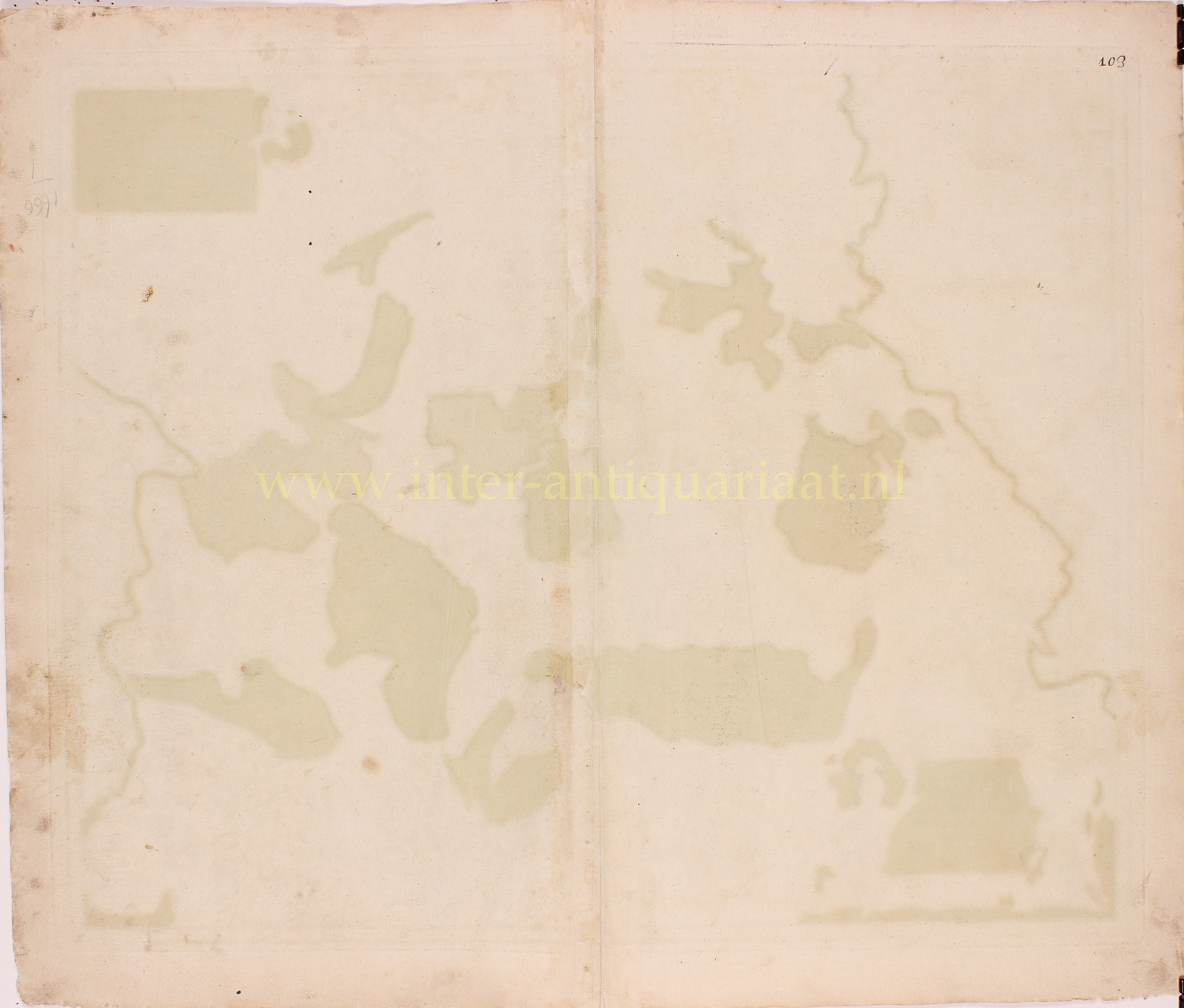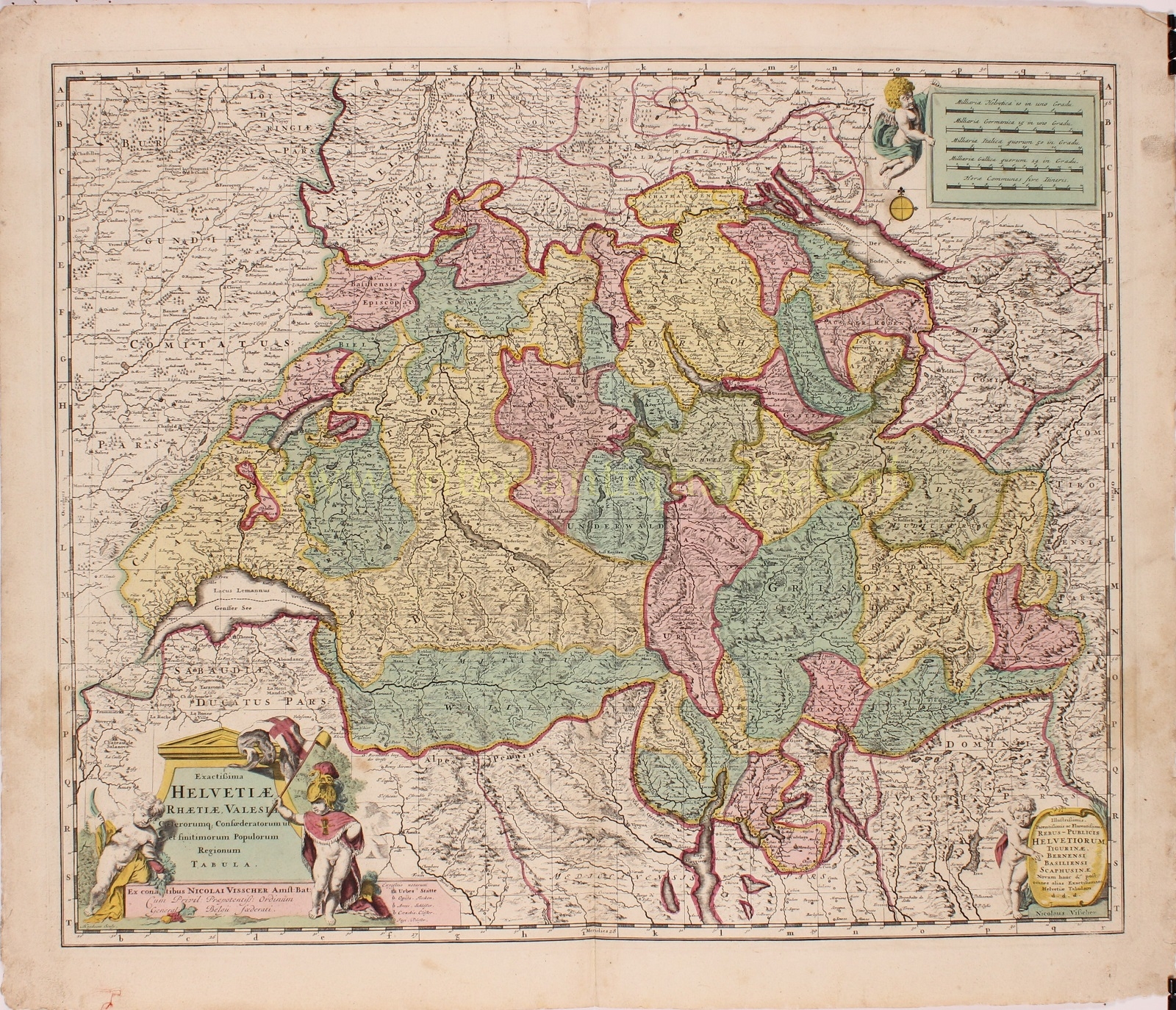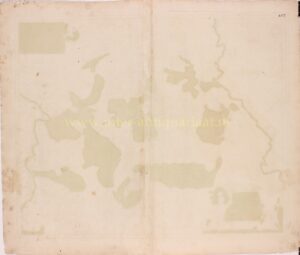“Exactissima Helvetiae Rhaetiae, Valesiae caeterorumq[ue] confoederatorum ut et finitimorum populorum regionum tabula.” [The most exact map of Switserland, Raetia, Valais, and the other confederates, as well as of the neighboring nations.] Copper engraving published by Nicolaes Visscher in Amsterdam around 1680. With original hand colouring. Size: 47,3 x 57 cm.
Whilst Europe was torn by the Thirty Years’ War, Switzerland experienced the 17th century as a period of peace and rising prosperity. The cities generally lay low and watched the destruction from afar. Neutrality was beneficial to the economy, allowing the confederation to supply other countries with goods. The influx of refugees, especially French Huguenots after their expulsion in 1685, was particularly important in rehabilitating old crafts and establishing new enterprises.
Accumulated mainly from the pensions of the mercenary system and from commercial sources, Swiss capital was desperately needed in those countries that constantly were at war, especially in France, and Genevan bankers became the centre of an extensive European financial network.
There was plenty of capital available to finance industrial expansion. Natural resources did not exist in sufficient quantities for easy exploitation and the cultivation of land could not support the rising population, meaning the Swiss Confederation had ample supply of labour. As landlocked Switzerland had no shipping enterprises or colonial possessions, industry was the obvious way to develop economically.
Price: SOLD







